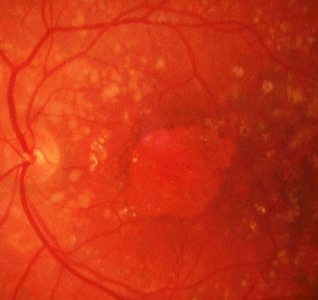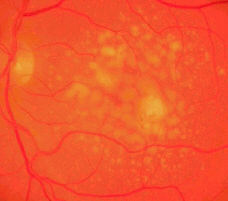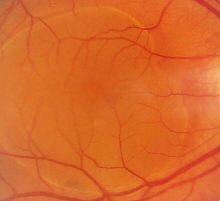Age-related macular degeneration (ARMD)
|
|||
| Age-related macular degeneration
is another popular macular case. You will be expected to know the Macular
Photocoagulation Study and TAP study on photodynamic therapy (which is currently in vogue). The macula contains drusen. In the non-exudative type
there are areas of RPE atrophy. Confluent areas of atrophy
In the exudative (wet) type there may be hard exudates
with or without subretinal haemorrhage. The macula may be
Other features to look for:
patients, consider Doyne's disease or familial inherited drusen or Stargardt's disease). |
Questions:
1. What does the Macular Photocoagulation Study show with
regard to age-related macular degeneration?


